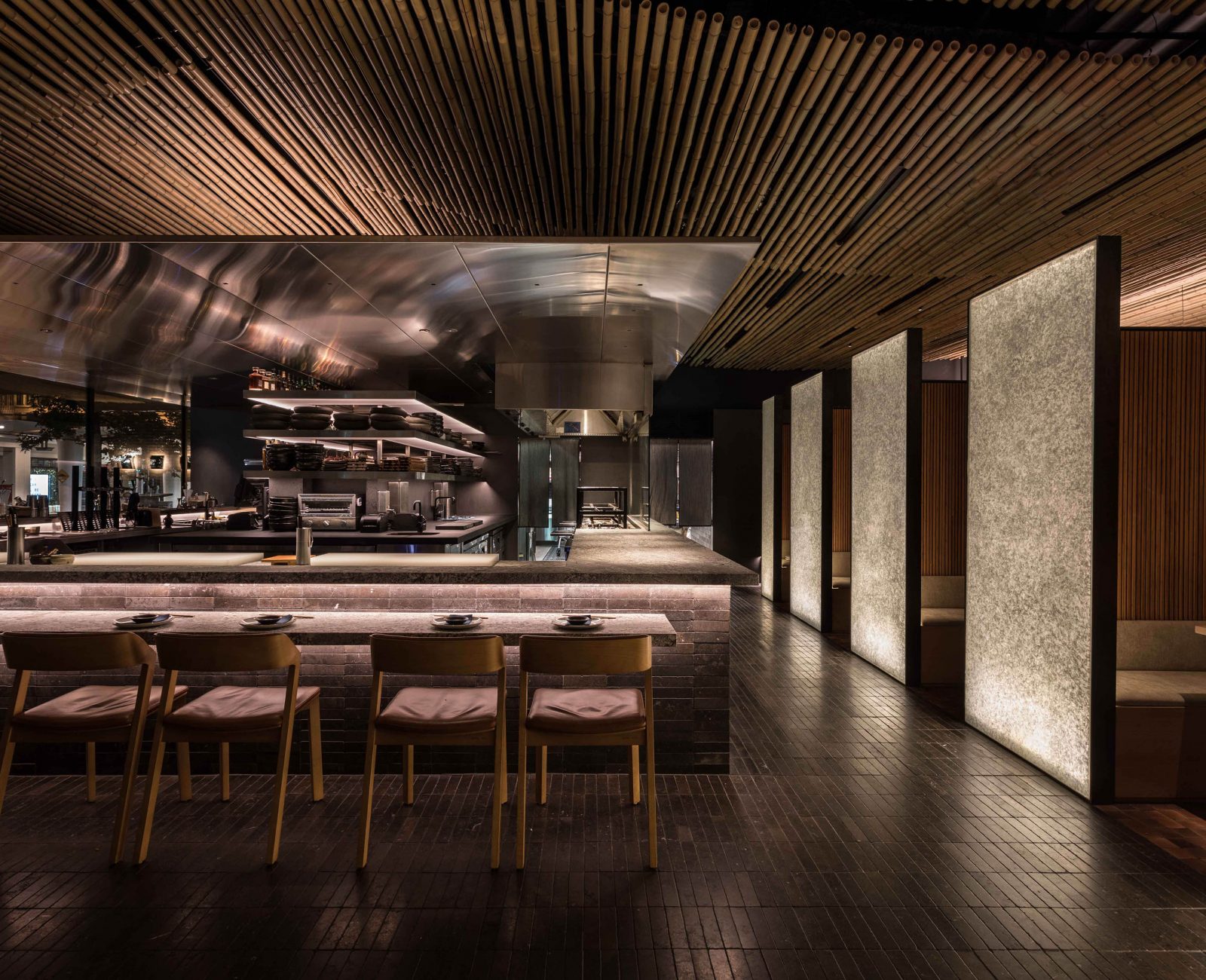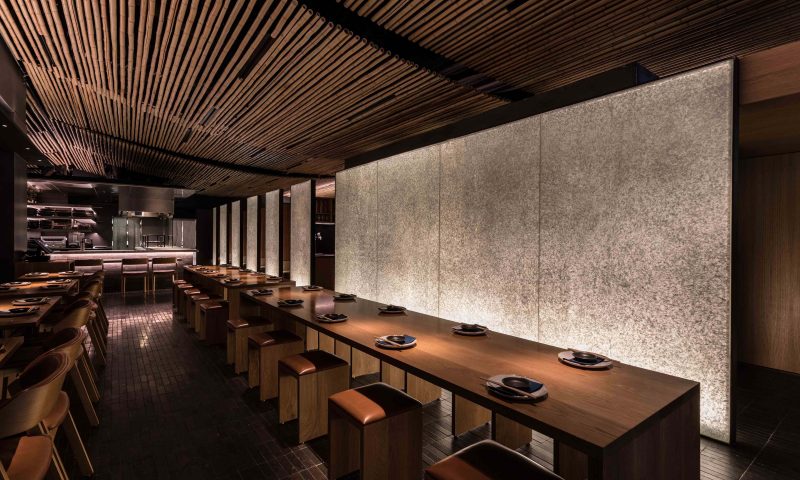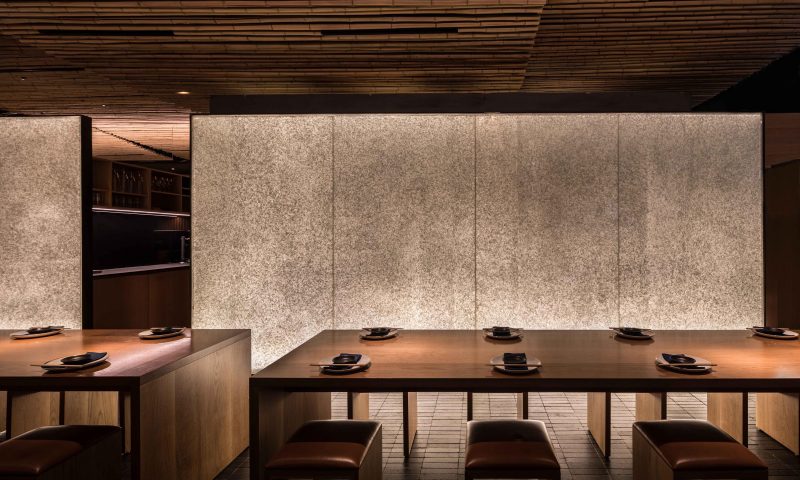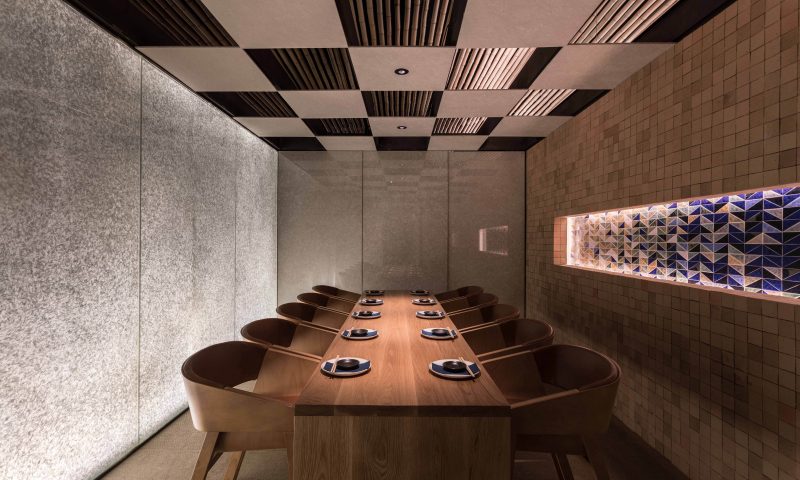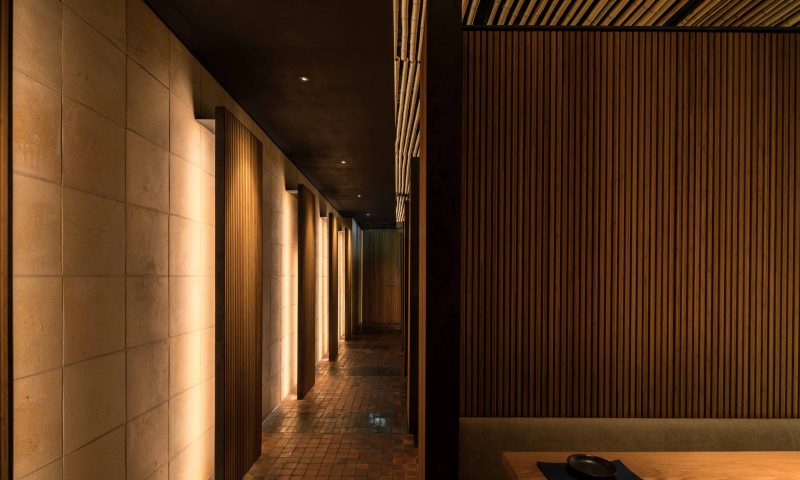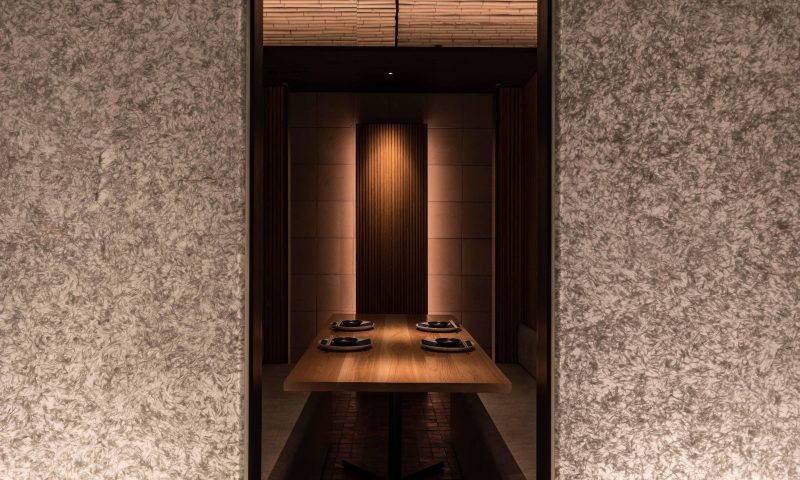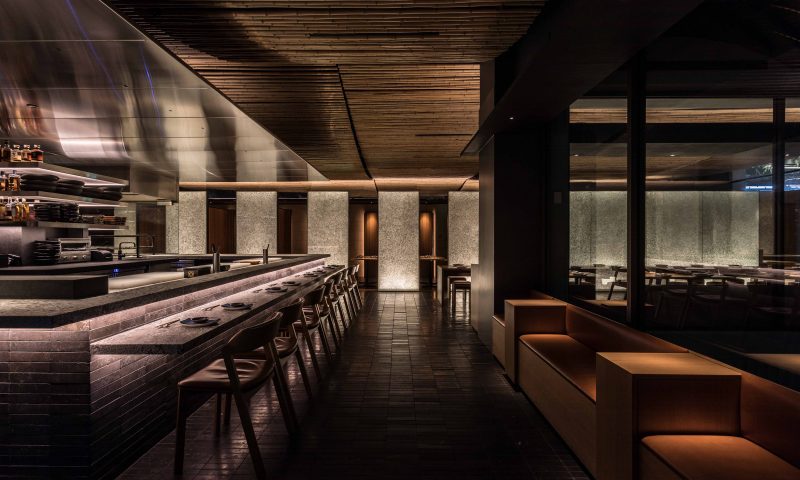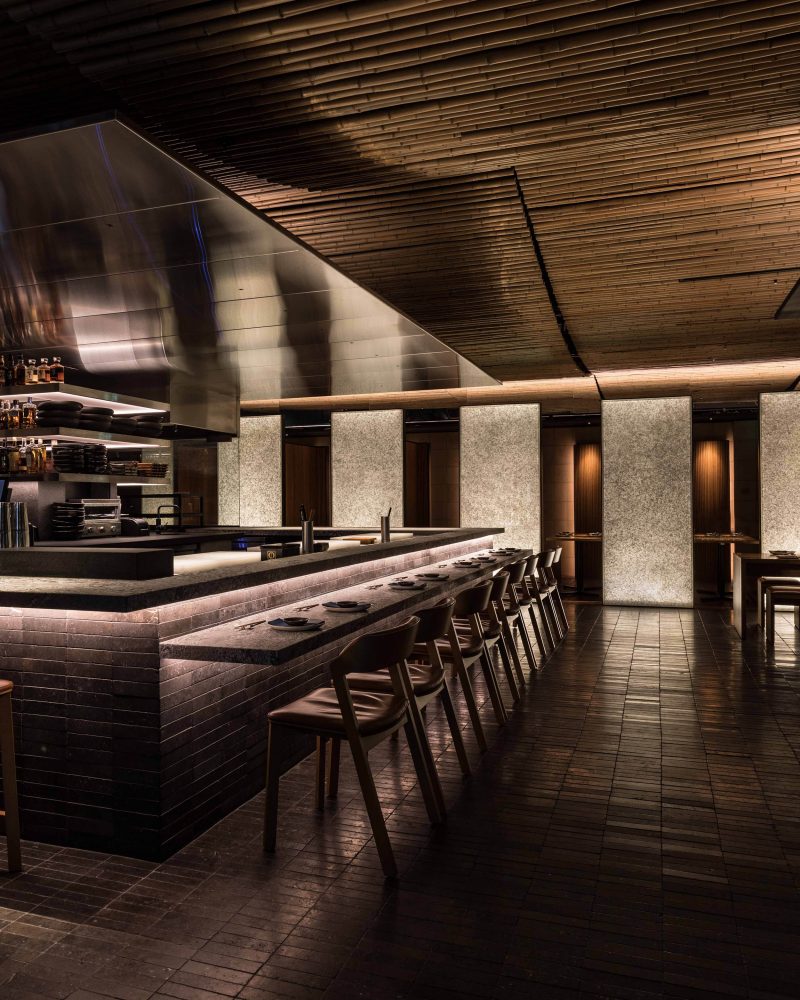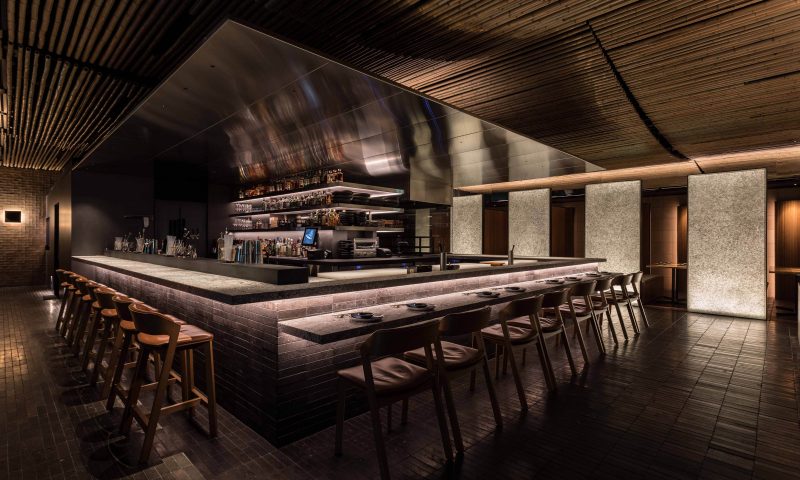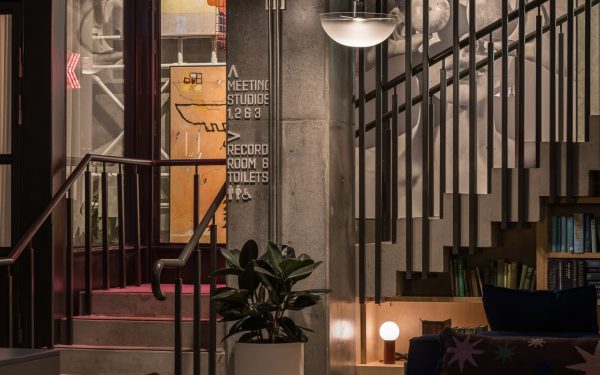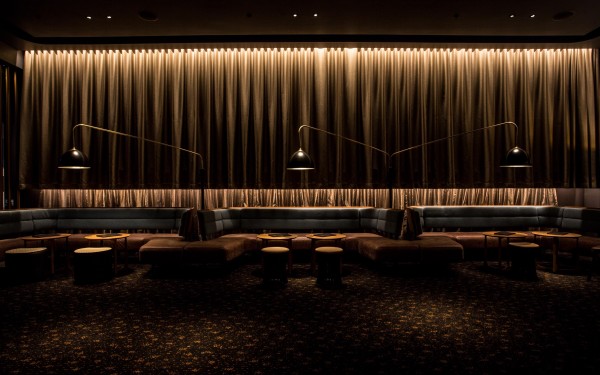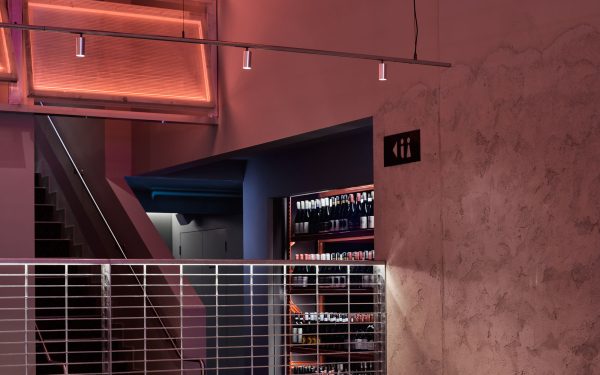The lighting concept offers similar sophistication, allowing the layers to be articulated without embellishment. The aim was to apply light thoughtfully and deliberately to capture the textures and the food. The combination of various materials and volumes drove a complex series of details to ensure light was experienced but not seen, and each space felt inherently connected to the next.
The brief for Raku was to create a striking, sleek, minimal dining space that resonates refined sophistication. The food offered here is considered some of the finest modern Asian fusion, with a Japanese focus. The interior architect’s vision was to create a central stage for the chefs, and layering of materials and textures to compliment the artfulness of the cuisine. Ideally, luminaires were to be entirely concealed from view.
The lighting concept offers a similarly sleek and refined sophistication, allowing the layers to be articulated without unnecessary embellishment, providing an organic luminance and intimate, personal setting. The centrally located kitchen presents itself to diners as a salient stage for culinary theatre, in juxtaposition with the outer space.
The aim was to apply light thoughtfully and deliberately to capture the textures and tables, but at the same time retain a natural flow of illumination. The combination of various material layers and volumes drove a complex series of details to ensure light was experienced but not seen, and each space felt inherently connected to the next.
Slight gaps in the ceiling materials allow light to penetrate to tables below, and laser-cut portals create a frame for miniature downlights to the chefs preparation bench. Private dining spaces are created through the use of illuminated partitions, lined each side with rice paper and illuminated from the bottom up with precise lensed LED grazing.
A mixture of organic materials adorn the dining spaces, while highly-polished stainless steel cladding wraps the kitchen stage. This amalgamation of finishes, matt, textured, transparent and specular, presented several challenges to avoid visible luminaires.
Our challenge was to express and celebrate these finishes in their own way, accentuating the contrast these materials can create when layered together. In some instances, illumination of materials is achieved through 2 and 3 phase reflection.
Custom shelf lighting, utilising edge-illuminated resin panels, provides soft glowing layers to the centre of the kitchen space. Reflections, soft and controlled are welcomed as a means to emphasize the floating canopy.
To the diner, the space appears to continue beyond the actual space. Mirrors were recommended to the upper perimeter during the design phase to extend the visibility of the illuminated bamboo ceilings, while application of multiple light sources capture layered panelling to create visual depth.
The food, both at the kitchen preparation, bar and on the dining tables, is precisely illuminated using focused, extremely high colour rendering sources. Since completion, this installation has been praised by both guests and the chefs as being perfectly illuminated for their distinctive purposes.
